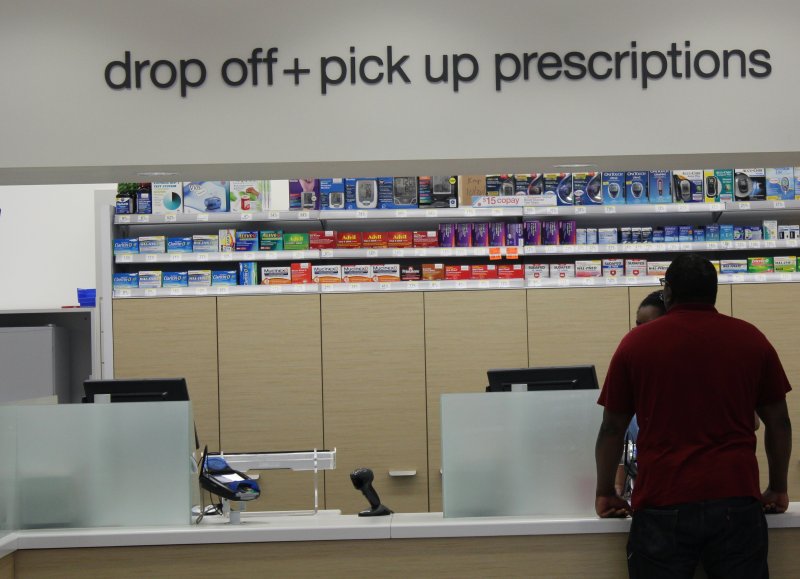Pharmacists assist a customer at a pharmacy in Washington, DC. A new survey showed U.S. firms with many lower-wage workers require workers to pay $1,363 more on average than workers at firms with fewer lower-wage workers. (UPI/Billie Jean Shaw)
MENLO PARK, Calif., Aug. 21 (UPI) -- Annual premiums for employer-sponsored family health insurance coverage rose by 4 percent from last year, a U.S. survey indicates.
The 15th annual Kaiser/HRET survey of more than 2,000 small and large employers found U.S. workers on average paid $4,565 toward health insurance coverage. Employers paid the difference of the average family health premium of $16,351 a year.
Since 2003, premiums have increased 80 percent, nearly three times as fast as wages, which increased 31 percent and inflation, which increase by 27 percent. In the 2000s annually rate increases were often in double digits.
The survey showed U.S. firms with many lower-wage workers -- at least 35 percent earning $23,000 or less annually -- require workers to pay $1,363 more on average toward family premiums than workers at firms with fewer lower-wage workers, or $5,818 versus $4,455 annually.
This year, the survey found 57 percent of firms offer health benefits to their workers -- statistically unchanged from the 61 percent in 2012 and 60 percent in 2011.
As in the past, the larger an employer is, the more likely it is to offer health benefits -- with nearly all firms with at least 200 workers offering health benefits to at least some workers.
The annual survey is a joint project of the Kaiser Family Foundation and the Health Research & Educational Trust.
The survey was conducted between January and May and included 2,948 randomly selected, non-federal public and private firms with three or more employees -- 2,067 of which responded to the full survey and 881 of which responded to a single question about offering coverage. No margin of error was provided.
The findings were published in the journal Health Affairs.















